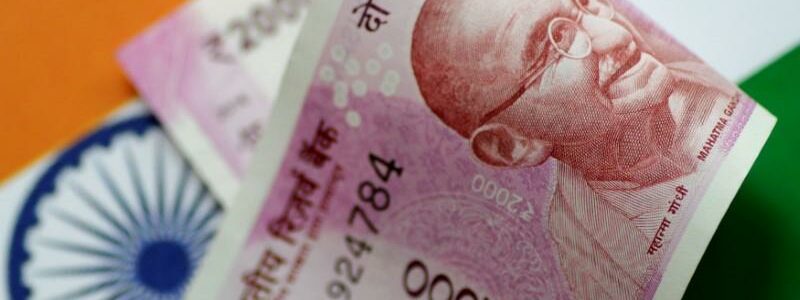
India rupee at six-week low; bond yields rise after hawkish Fed signal
MUMBAI (Reuters) – The Indian rupee weakened to its lowest level since early May on Thursday while bond yields rose as the U.S. Federal reserve stunned investors by signalling it might raise interest rates as early as 2023, faster than assumed.
The partially convertible rupee was trading at 73.79/80 per dollar at 0816 GMT compared with its close of 73.3225, after touching 73.83, its lowest since May 6.
India’s benchmark 10-year bond yield was down 1 basis point at 6.04% but most other bond yields rose 3-4 basis points tracking the U.S. benchmark bond yield which jumped 7.5 basis points.
“Forward guidance from the Fed proved to be more hawkish than what the market expected,” Eugene Leow, strategist at DBS wrote in a note.
Traders said the surge in the dollar index to two-month highs following the Fed’s comments on possible rate increases and a significantly higher inflation projection weighed on sentiment for all Asian currencies.
Long bets on most of Asia’s emerging currencies were trimmed, a Reuters poll showed on Thursday, as investors weigh the prospect of tighter monetary settings as the U.S. recovery outperforms, while the COVID-19 situation locally is brought under control.
Traders however believe that central bank intervention will likely stabilise the rupee in the short-term but it would also depend on how things pan out globally.
“Given the strength in the dollar, it is likely that the USD/INR could now move into a new trading range,” HDFC Bank economists wrote in a note.
“However, given the volatility in the market, that usually follows such events (Fed policy), we are holding off on changing our near-term call before the market digests the news and recent dollar moves show some resilience,” they said.
Bond traders are awaiting the outcome of the 300 billion rupees worth of bond repurchase auction, which includes the benchmark bond apart from five other papers, while the RBI is also scheduled to buy 100 billion rupees worth of state bonds.
Source: Read Full Article